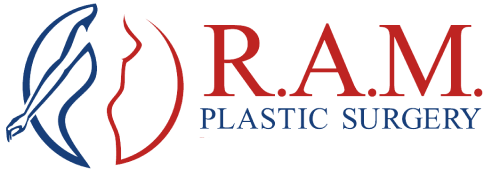Tummy Tuck Chicago
Also called an abdominoplasty, a tummy tuck is a cosmetic procedure used to improve the appearance of the abdominal region. During a tummy tuck, our plastic surgeon in Chicago removes excess fat and skin from the abdomen, and tightens connective tissues and muscles with sutures. The skin is repositioned to create a toned, sleek look.
Who is a Candidate for a Tummy Tuck?
The abdomen may protrude after abdominal fascia is stretched from significant weight gain or loss. A tummy tuck can be used to remove the loose, flabby skin and fat, as well as tighten the fascia. A tummy tuck is good for anyone who:
- Has skin that accumulated around the belly button.
- Has a weak lower abdominal wall.
- Has low self-esteem due to abdominal size and shape.
- Has a flabby abdomen because of poor skin elasticity.
- Does not plan to have any more children.
- Is in good physical health.
- Has stretch marks below the belly button.

Initial Consultation with Dr. Azizi
Before scheduling a tummy tuck, Dr. Azizi will want to meet with you for the initial consultation. Dr. Azizi will:
- Review your medical history – This involves questions about allergies, current medications, and your past and current medical problems. In addition, discuss any questions you have regarding weight loss or gain.
- Conduct a physical exam – Dr. Azizi will take pictures of you for your medical record, assess your condition for health status, and order some preoperative tests.
- Discuss expectations – It is important that you have realistic expectations for your abdominoplasty. The doctor will discuss your desired look, and go over the procedure risks and benefits.

Before the Surgery
Before your abdominoplasty procedure in Chicago, you should:
- Stop smoking – Because smoking decreases circulation to the skin, wound healing is affected. You must not smoke for 6 weeks before your procedure.
- Avoid certain medications – Certain blood-thinning drugs cause bleeding (aspirin, Coumadin, Ibuprofen, Plavix, over the counter herbal supplements/vitamins), so they must be held for several days before surgery.
- Maintain a stable weight – You must have a stable weight for 6 months before surgery, and you need to maintain the weight after your procedure for best results.
- Arrange for help during recovery – You need to plan to be off from work, arrange to have someone drive you home, have someone watch your children for a few days afterwards, and have someone stay with you for the first night when you go home.
During the Abdominoplasty
Before the tummy tuck procedure, you are given general anesthesia, which means you will be put to sleep. The skin is cleaned with an antiseptic, and incisions are made along the pubic region (bikini line). The surgeon tightens the abdominal muscles and fascia, removes excess skin and fat tissue, and holds connective tissues up with sutures.
The incision is closed using sutures. Liposuction may be used to remove fat tissue from the abdomen and flanks. This involves insertion of a cannula into the abdomen and gently suctioning away fat cells.
After the Procedure
You will be monitored by a nurse for around 45 minutes following the surgery. Expect to have 2 small drains to remove excess body fluid, as well as bandages and a compression garment. Bruising, soreness, and swelling is common after abdominoplasty.
Soreness for a week is common and swelling can remain for up to a month, especially if liposuction is also used. You are positioned in the bed with your body raised and your knees slightly bent for a few days after surgery, in a “beach chair” position. We recommend that you move about your home, but avoid strenuous activities, lifting, or bending.
You will return to the surgeon’s office in 4-10 days to have drains, bandages, and sutures removed. You cannot soak in a sauna or hot tub until wounds have healed, and should wear the abdominal binder for 6 weeks. It takes around 6-8 weeks to recover from a tummy tuck, but you are permitted to return to work in a couple of weeks if you have a desk job.



